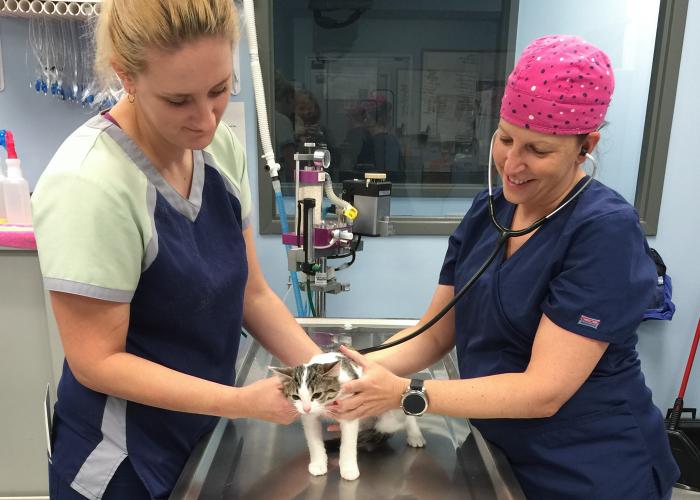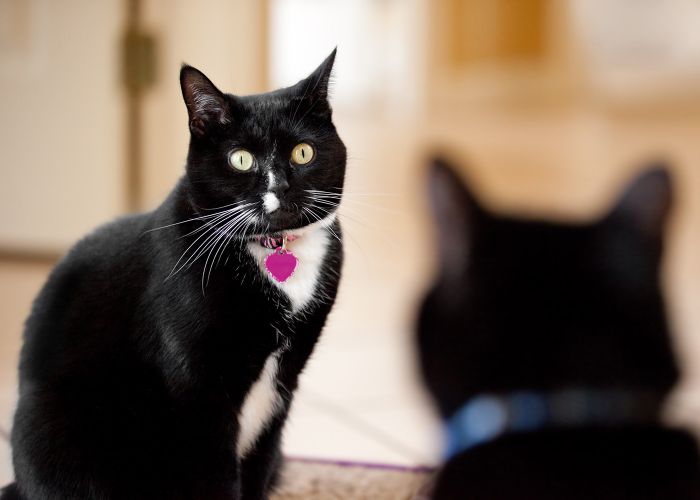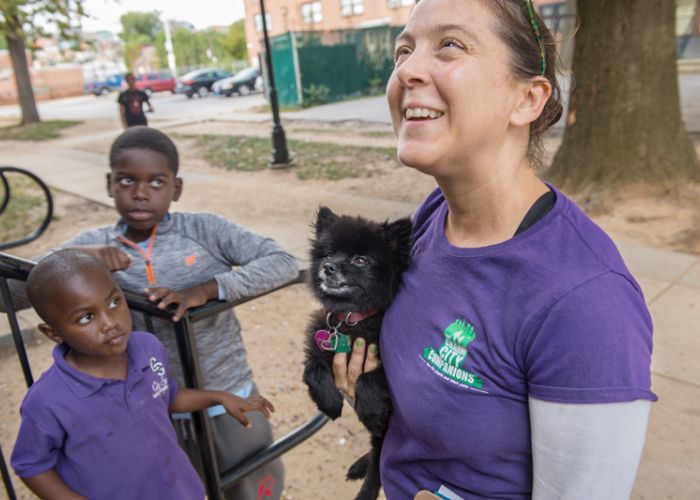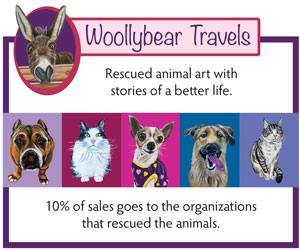Not all who wander are lost
Virginia shelter empowers free-roaming cats to find their way back home
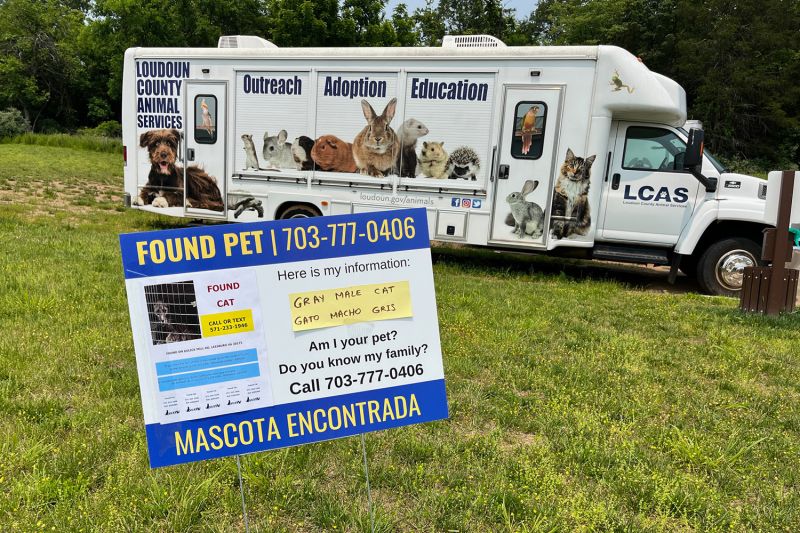
Snowball’s path to the Loudoun County, Virginia, animal shelter was paved with good intentions. The friendly white cat arrived in the arms of a community member who assumed he was abandoned and needed rescuing, says director of animal services Nina Stively.
Without a collar and ID or microchip, Snowball could have been assigned an intake number and a cage. But shelter staff suspected the overweight fluffball was likely an owned pet who was allowed to roam his neighborhood.
Instead of admitting Snowball to the shelter and starting the clock on his stray hold, the team took a different approach: They instructed the finder to return him to the neighborhood where he was found—now wearing a collar that read “Am I your cat?” along with Stively’s cell phone number.
The same day, a family called to report that Snowball was indeed their cat and was safely back home. A few hours later, another family called, also claiming ownership and expressing gratitude to have their pet back.
While Snowball was unable to say which family he considered his official owners, he was obviously skilled at convincing multiple people to feed him. His successful reunion with both households was the result of Tag! You’re Home!, an innovative program designed to prevent unnecessary shelter intakes and keep pets with their families.
Homing instincts
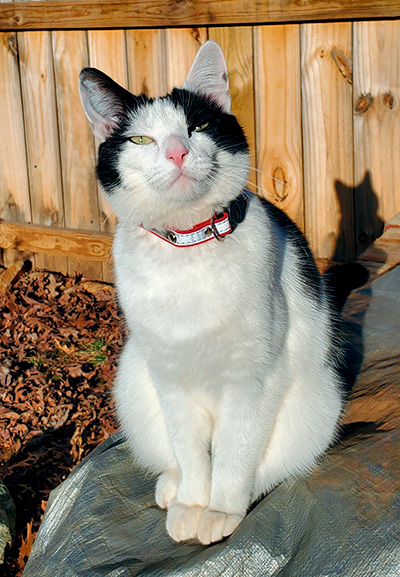
Launched in July 2022, the program reflects the sheltering field’s ongoing efforts to meet the various needs of free-roaming cats. “It’s always been a challenge because we have many different kinds of cats that will be outside at any given time,” says veterinarian and shelter medicine consultant Dr. Aimee Dalrymple.
Any mystery cat who comes through a shelter’s doors could be an indoor-outdoor pet, a beloved community cat with caretakers, or a lost or abandoned cat. Without a microchip, ear-tip or visible form of ID, no one can be sure.
What shelters do know is that many of the cats brought to them aren’t best served by the traditional intake-adoption model. Nationwide, only about 3% of cats in shelters are reclaimed by owners. Studies have found that cats have much better chances of being reunited with their families if they never enter the shelter system.
“We certainly don’t want to admit cats who don’t need services,” Dalrymple says. “It’s a stressful experience for them, and it takes up space and resources other animals might need.”
With this in mind, the Loudoun shelter has long discouraged community members from bringing in healthy free-roaming cats. Instead, staff members counsel people how to search for an owner or caretaker or refer them to local trap-neuter-return resources.
Combined with low-cost vaccination and free microchip clinics, a community cat spay/neuter program, streamlined public messaging on community cats and animal services officers who prioritize return-to-owner in the field, the approach has led to a significant drop in the shelter’s feline intakes and disease outbreaks in recent years, Stively says.
But since not everyone contacts the shelter before bringing in an animal, cats like Snowball still occasionally show up at the intake counter. For them, Stively and her team devised a new strategy.
How it works
Of the nearly 1,000 cats and kittens the Loudoun shelter takes in each year, about a third are classified as strays. The Tag! program is targeted to a small subset of these cats: healthy, social adults who lack any form of ID but whom shelter staff strongly suspect are owned pets or community cats with caretakers. Injured, sick or visibly pregnant cats or ones in dangerous situations are excluded, as are young kittens.
Instead of spending five days on a stray hold at the shelter, cats in the Tag! program are given a chance to meander back home, bearing a collar that alerts a potential owner that someone is concerned their pet might be homeless. The cat’s photo is posted on the shelter’s found pets webpage, and the person who brought the cat to the shelter is given a spare collar along with customized “found cat” yard signs and flyers.
This gives the cat’s family a chance to say, “Hey, you know, that’s my cat. She’s just out on her nightly walkabout,” Stively says.
If no owner or caretaker responds after five days and the cat is still hanging around the place where they were originally picked up, the finder is allowed to bring the kitty back to the shelter for intake. During the first 18 months of the program, 32 cats were enrolled. A study published in early 2025 showed that for more than 80% of them, shelter intake wasn’t required.
While the number of cats in the program is relatively small, for Stively and her team, the program is less about decreasing intakes and more about keeping pets with their families. “We take return-to-owner very seriously,” she says. “That’s part of our culture.”
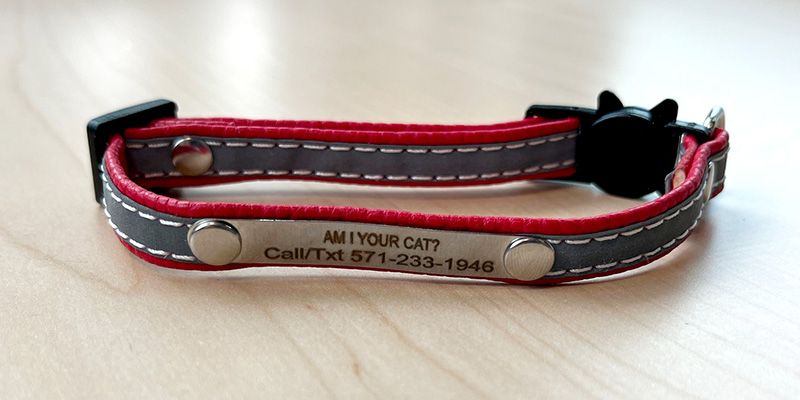
Connecting through cats
Perhaps the biggest challenge in the Tag! program is persuading cat finders to give it a try. Community members who take the time to pick up a cat and deliver them to the shelter are typically motivated by a deep concern for the animal and convinced the shelter is the best place for them. They’re often skeptical of a strategy that involves returning the cat to where they were found.
Education and consistent messaging are key to the program’s success, Stively says. “Having this tangible program has really taught people that, ‘Yes, there is a way you can be involved. We will support you through it. Here’s the data. Here’s the flyer.’ It’s an entire package that allows people to really be involved with the solution. It demonstrates we care and we’re an organization that bases decisions on data and research.”
Stively also appreciates how the program enables her to form relationships with both cat finders and cat owners who aren’t familiar with her agency and its services.
Because the Tag! cats never enter the shelter’s custody, the Loudoun shelter isn’t able to sterilize them. (In Virginia, municipal shelters aren’t allowed to operate return-to-field programs due to a 2013 State Attorney General’s opinion.) But for those cats whose people reached out to confirm ownership, nearly all were already spayed or neutered. Stively offered their owners a free microchip. For the few cats not already sterilized, she added a free surgery to the offer—so far, all their families have taken her up on it.
Like many modern sheltering strategies, the Tag! program is guided as much by human behavior as it is by animal behavior, Dalrymple says. In today’s highly mobile society, many people don’t know their neighbors—or their pets.
“People are insistent. They say, ‘I’ve never seen this cat before, it must have been abandoned,’” Stively says. In reality, most cats in the program were picked up “shockingly close” to their homes. In many cases, right next door.
Whenever an owner reports that their cat is back home, Stively is quick to share the news with the finder. “They are overjoyed every time. They are just shocked and surprised and cannot believe that this could possibly have happened. … Allowing people to hear that positive resolution really goes a long way.”



